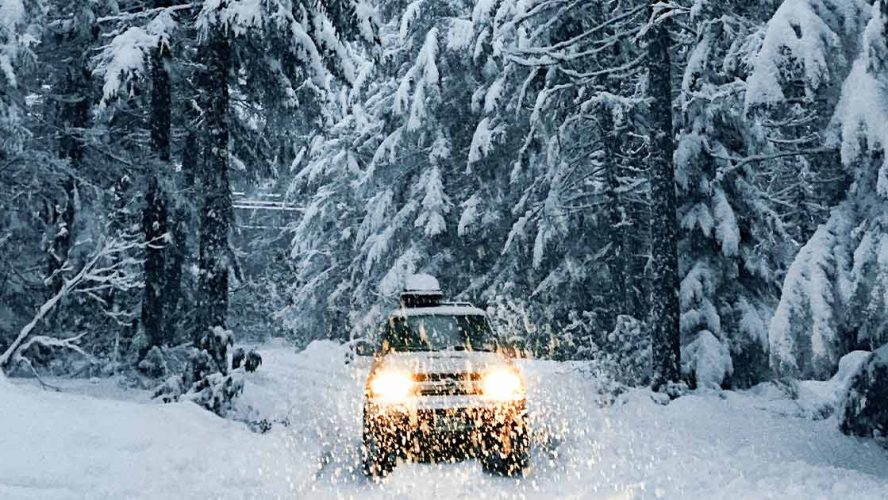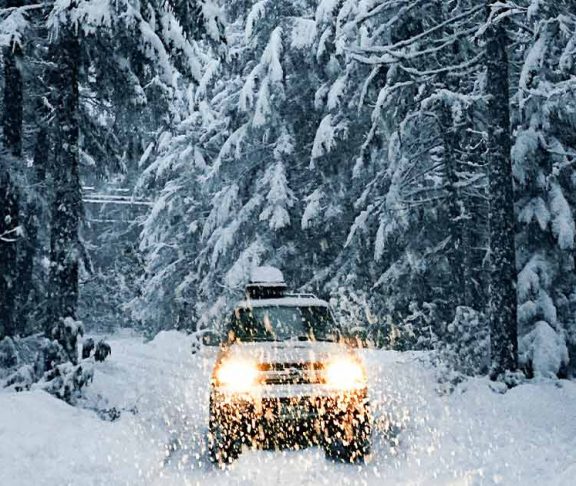Don’t be caught unprepared in winter weather. If you haven’t already, have a reputable garage do a tune-up and inspection on your vehicle to prevent problems this winter. Here are 12 tips from the Canada Safety Council on how to keep your car road-ready this season.
1. Check the brakes
The brakes must be faultless and equalized so there’s no pulling to one side, which can cause skidding.
2. Flush your cooling system
If it hasn’t been done in a while, have your cooling system flushed out with a good chemical cleaner and put in fresh anti-freeze. Check containers, belts, hoses, the pressure caps, and the thermostat.
3. Check your battery and electrical system
Cold weather is hard on batteries. If your battery is several years old, have it checked. Be sure connections are clean and tight.
4. Run an engine diagnostic
A diagnostic check-up of the engine can be a good winter investment. If you’re due for a tune-up, have it done as soon as possible. Faulty wiring, worn spark plugs, a sticking choke, or emission control devices that need attention, can all lead to hard starting.
5. Look for leaks
Check the muffler and tail pipe system for carbon monoxide leaks, which can be especially dangerous during cold weather driving when the windows are closed.
6. Fuel up
Make sure there’s always plenty of gas in your tank. A full tank minimizes condensation, which can cause gas line freezing. Add gasoline antifreeze occasionally.
7. Examine your visibility heaters, defrosters and wipers
Have your heaters, defrosters, and wipers checked to make sure they’re operational. Install winter wiper blades and use cold weather washer fluid. Ensure your windshield can give you clear vision of the road and traffic around you.
8. Change your oil and filter
Dirty oil can give you trouble in the winter, so change the oil and filter. Check the other filters, including the fuel, air, and transmission filters.
9. Check or change your tires
Snow tires increase traction in soft snow. Install them on all four wheels. All-season tires on all wheels with good treads are adequate in some regions. Check your tire pressure regularly — for every 5°C of temperature drop, tire pressure goes down by one pound.
10. Be prepared
The following items should cover most situations:
- first aid kit
- flares
- bag of sand, wire traction mat, or other abrasive substance
- flashlight
- properly-inflated spare tire
- wheel wrench and jack
- battery jumper cables
- large box of facial tissues
- lightweight shovel
- windshield scraper and snow brush
For long-distance travel, take extra precautions: bring a blanket, candles, a lighter or matches, emergency rations, lined winter boots, a hat and other warm clothes, and small heating cans.
11. Drive defensively
Winter driving demands extra caution. Always be ready for the unsafe actions of other drivers and for poor driving conditions. Clear the snow and ice from your car, allow more travel time, leave a greater following distance, and know how to deal with icy conditions.
12. Consider a block heater
Use a block heater in winter when the temperature drops to -20°C (-4°F) or below. A block heater keeps your engine oil and coolant warm, which makes the vehicle easier to start and can increase winter fuel economy by as much as 10%. Use a timer to switch on the block heater one or two hours before you plan to drive.
Lewis Smith is Manager of National Projects at Canada Safety Council.



